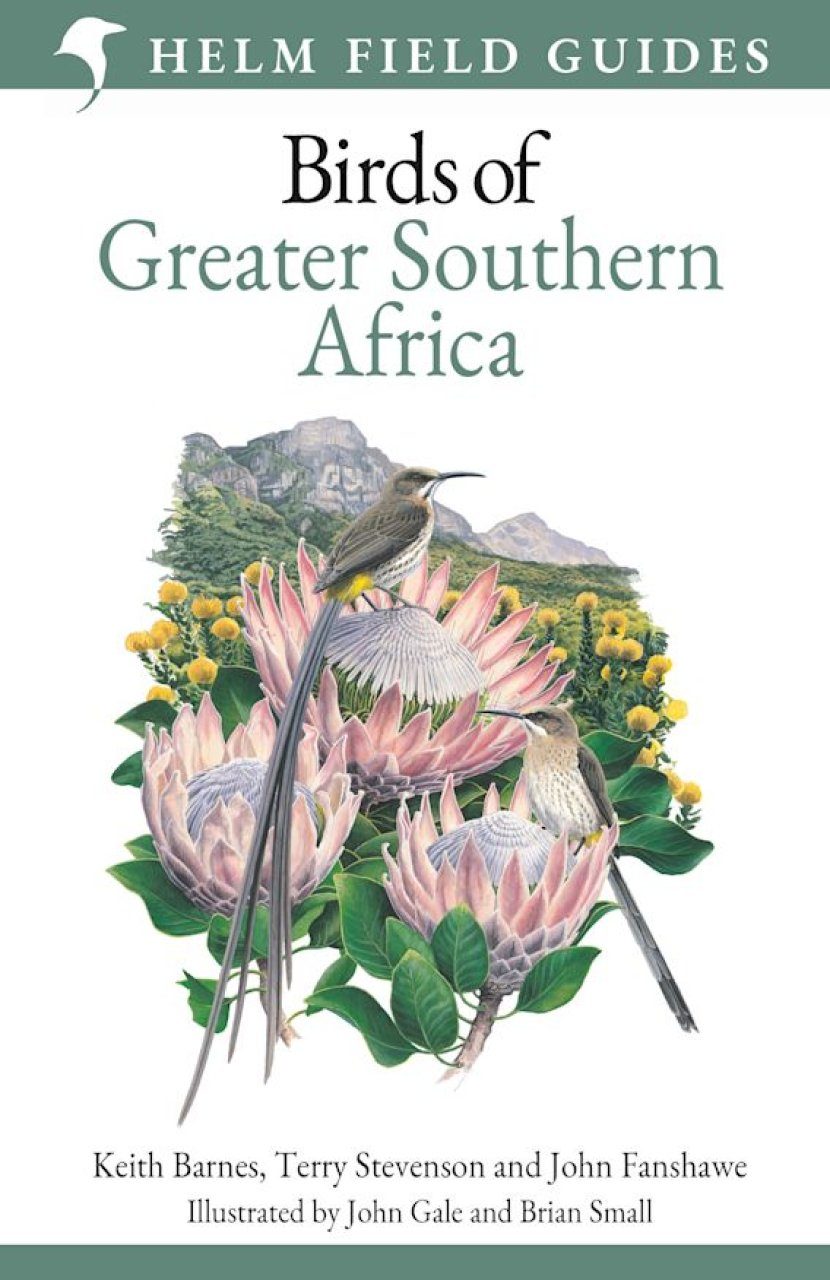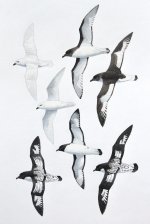My review of BOGSA!
I am a tutor by trade. If we’re working on college essays, it is my job to help my students to condense their ideas, to express their thoughts on paper, and, most importantly, to remain organized at all times. Throughout my OCD-ridden life (thanks mom and dad!), I’ve always been attracted to neat, orderly things. This was evident when I turned ten and created an alphabetized file-cabinet for my homework. My OCD almost certainly played a role in my obsession with field guides, which has only gotten stronger day by day, month by month when I peruse the “not-yet published” section on buteobooks and NHBS.
Just a handful of hours ago, I received my copy of
Birds of Greater Southern Africa by Keith Barnes. I first heard about this book just over a year ago when I was scrolling through birdforum.net and stumbled upon a thread full of birders eager to learn more about the details of this title. There has been much (and I mean MUCH) anticipation surrounding the publication of this field guide. Unlike Brazil, Central Africa, or Hawaii, South Africa is a country rich in field guides. The “top 3’ – Sasol, Newman, and Robert’s are actually considered to be of the highest caliber as far as field guides go (Sasol and Robert’s especially). So why another South African field guide? What makes this guide stand apart from the others? Let’s get into it:
Perhaps the most exciting feature of this guide is the extensive range it covers. “Greater” Southern Africa, unlike the aforementioned field guides, includes Malawai, Zambia, and all of Mozambique. These are countries that have not been covered by modern field guides, and the books that do deal with the birds of these regions are very outdated, rendering them functionally useless (unless you are just flat out interested in collecting old avian-literature like myself! – Benson’s Birds of Zambia has a special place in my heart). I was hoping the guide included Angola, which boasts rare species like the Braun’s Bushshrike and Gabela Akalat), but Angola is going to be covered in its own field guide from Helm in a year from now. Because this guide covers Malawi, Zambia, and Mozambique, it gives the reader a sense of the how the avifauna changes geographically. The Ross’s Turaco, for example, has always been considered a rare vagrant in Southern Africa, but is actually a common and familiar species just a handful of miles north of Botswana and Namibia.
The artwork in BOGSA is consistent across the board, unlike in the Sasol guide, now in its 5th edition, which has some really beautiful plates by Norman Arlott and Faansie Peacock (seabirds <3, raptors, nightjars, and cisticolas just to name a few). Unfortunately, many of the illustrations in this guide are poor to downright inaccurate, for example, in the case of the ducks and waders. Just look at the duck illustrations below. They’re downright wonky, to say the least. The Pintail is depicted in a contorted odd, “clunky” position, the colors are “smudged,” and depict many species completely inaccurately. This is disappointing when compared to the Storm-Petrel and Albatross plates, which are among my favorite of any field guide…. The
Cuculus Cuckoo plates in Sasol also fall victim to the dilemma of poor artistry leading to potential misidentification in the field. The Madagascar Cuckoo looks drastically different than the Lesser Cuckoo, and is depicted as having a significantly buffier throat with barely any gray on the chest. In reality, the two species are so similar-looking, that it is often impossible to distinguish them in the field with the naked eye. By comparison, the artwork in BOGSA is consistently good to great through and through, and depicts every species with acute accuracy. Just compare the
Cuculus Cuckoos in BOGSA to the Sasol guide and you’ll see exactly what I mean. Another area in which BOGSA is superior to Sasol lies in the headings for the family accounts. The Sasol guide provides a basic, brief heading describing the family, while the BOGSA provides headers that go into greater detail about similar species depicted on the plates. These headers are full of wonderful little vignettes that are both fun to read and aid in the identification process (eg. The header describing how
Cuculus Cuckoos are “dashing, like small raptors [when in flight].” The amount of useful information in these headers truly expedites the identification process, and are also just plain fun to read! Despite the inconsistent quality of its artwork, I do prefer some of the plates in the Sasol guide to the plates in BOGSA. The Petrels, for example are absolutely beautifully done in Sasol, and look more life-like than the rather rigid specimens depicted in BOGSA. The “gist” of the Petrels in Sasol just happen to look truer-to-life (as well as more artistically pleasing-to-the-eye) than the Petrels in BOGSA. The same can be said about the Cisticolas in Sasol, which are much crisper and less uniform than the Cisticolas in BOGSA. This is simply a reflection of my own personal preference. I am a huge fan of the work of John Gale and Brian Small. I remember being about twelve years old in a Barnes and Noble browsing through a copy of the first edition of Princeton’s Birds of East Africa, and being absolutely flabbergasted by the artwork that depicted strange and unfamiliar birds from place I never dreamed I’d visit. Many of the illustrations are borrowed from
Birds of East Africa, which I was very happy to see. Some of my favorite illustrations in BOGSA are the raptors, cuckoos, Bushshrikes, and the larks (absolutely stunning!). I wish Faansie Peacock would’ve done more of the plates in this book – he’s my favorite bird artist! At the end of the day, unlike the Sasol guide, there are no plates in BOGSA that will throw the reader off and make identifying the birds themselves more difficult.
The Sasol guide has the advantage of birds separated from one another by black lines, which makes the plates feel less busy. I’m very fond of this format. Additionally, the birds in the Sasol guide are accompanied by little field marks next to the illustrations themselves. BOGSA lacks this feature, which is one of the few criticisms I have towards the book. I imagine, however, that the plates would look much too “busy” if these field marks were included. At the end of the day, however, the pros of BOGSA outweigh the cons of Sasol. This leads us to the other competition:
Roberts Bird Guide, now in its second edition. I’d argue that BOGSA beats Sasol by a mile, and Robert’s is its true competitor. The Roberts Guide, illustrated by Ingrid Weiersbye (who also illustrated the wonderful Princeton Botswana guide) is just as good as, and is in some ways better than BOGSA. I am very fond of the comparison pages with photographs and illustrations of head comparisons of similar species. These features remind me of the “confusing fall warbler” plates in the old Peterson field guide, or the comparison of “raptors in flight” from the old Golden guide by Arthur Singer…. Furthermore, the family headings in the Robert’s guide are the most extensive and detailed of any field guide I own. They describe the family generally, as well as the etymology of the genus and species names for each family of birds. Furthermore, while the maps in BOGSA are more accurate and nicer-looking than the ones in Sasol, the range maps in the Robert’s Bird Guide really take the cake and have both books beat. In this case, the obvious advantage of BOGSA is that it us more up-to-date and covers more species. Furthermore, BOGSA has updated taxonomy (eg. Refer to the Francolin plate), while Robert’s is outdated when it comes to species that have recently been split or lumped. Nonetheless, I’d say both of these books are equally good, and you can’t go wrong taking either one out in the field!
Birds of Greater Southern Africa is now one of my favorite field guides in general. It has surpassed my expectations in every way possible, from its artistry, to its sleek design and organization. This is now the best field guide to South African birds, and I implore you to grab a copy asap! (or grab two or three copies – one for you, a family member, and a friend!).
Examples of the inconsistency of the artwork in the Sasol guide
- introduced and vagrant ducks, lapwings
Some of the features of the Robert’s Guide that make it stand out
- comparison plates with photos (eg. warbler plate on 411)
- comparison plates with head comparison illustrations (181 falcon head comparisons)
some of my favorite plates in BOGSA
- larks (plate 151, larks V)
- buttonquail (plate 67, buttonquails)













